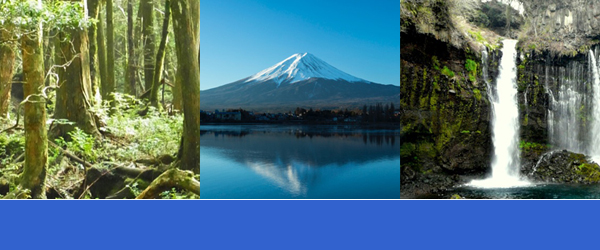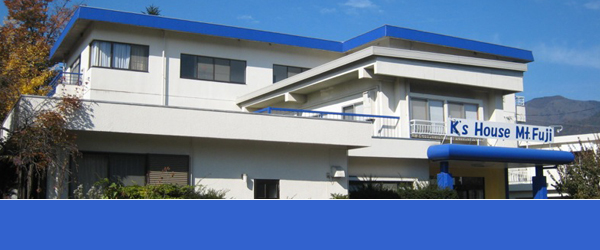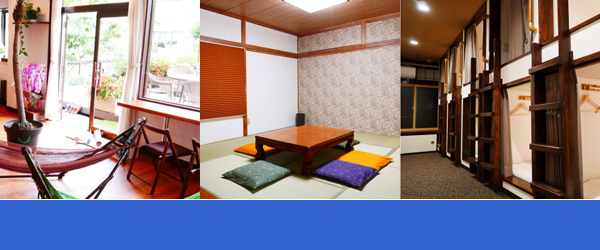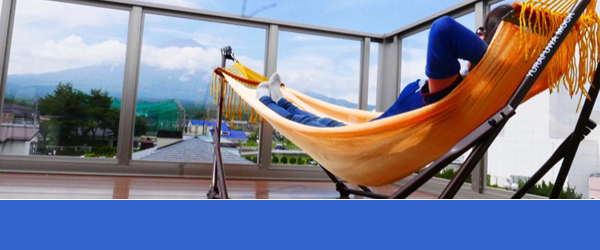Something you need to know before climbing Mt. Fuji
When you think of Japan, what comes to mind? Samurai, geisha or sushi? Or maybe… Mt. Fuji? Mt. Fuji, the highest mountain (3776m) in Japan and still an active volcano, has an important place in Japan’s history, arts and culture, and to this day she is considered sacred and is worshipped by Japanese people. So, climbing Mt. Fuji at least once in their lifetime is something many Japanese aim to do. There are about 200,000 to 300,000 hikers climbing Mt. Fuji every year. Climbing only occurs during summer, when it is safest. If you want to be one of them someday, please check the following in advance.
※In 2025, the Yoshida Trail(Yamanashi Prefecture) is opened on 1st July and other three trails(Fujinomiya Trail, Gotemba Trail and Subashiri Trail in Shizuoka Prefecture) is opened on 10th July. All trails will be closed on 10th September.
Climbing trails
There are four basic trails for climbing Mt. Fuji: the Yoshida Trail, the Fujinomiya Trail, the Gotemba Trail and the Subashiri Trail. Only the Yoshida Trail is in Yamanashi Prefecture, the other three trails are located in Shizuoka Prefecture. Nowadays, thanks to modern infrastructure, non-professionals can take the bus to the half-way point of Mt. Fuji, known as 5th station, and hike about five to eight hours to the summit. Mountain huts are placed at each ascending trail to provide services.
- Yoshida Trail: The oldest and most popular trail. Most recommended for beginners.
- Fujinomiya Trail: The shortest and second-most popular trail.
- Gotemba Trail: The longest trail.
- Subashiri Trail: Less popular but a good option for those who enjoy forests and high-mountain plants.

Go this way to Yoshida Trail
Climbing season
The climbing season is only from July to early September. Exact opening times will normally depend on the trail. Beyond this period the trails are not open to the public because they might get covered with snow, all the huts and toilets will be closed, and if had a problem on the mountain, rescue would be much more difficult. Therefore, climbing Mt. Fuji out of season is risky and not recommended.
The peak periods are August and weekends. The summer rainy season may persist until June or July and school summer vacations are in August. If you want to climb without it being too crowded, weekdays are best time to go.

Still some snow remains in summer
Go by yourself or with a tour group?
If you are a beginner at hiking, it might be better to climb with a tour group. You would then have a guide and companions to climb the mountain with you. Most of the preparations would be made in advance for you, so you wouldn’t need to worry too much. However, if you have some experience with hiking, you can go by yourself. That way your schedule would be more flexible for resting and taking photos.

Descent
Preparation before you go
Hiking Mt. Fuji is a real hiking challenge, so it is important to be well-prepared. Staying overnight at a mountain hut is often for the best, no matter which trail you choose. Some professionals might complete the climb in one day, but more time and physical strength is required.
Training
If you are afraid you aren’t fit enough to reach to the top, or if you are sensitive to altitude sickness, please train for a few months before you go.
Reserving mountain huts
The climbing season is only during summer and camping is prohibited on Mt. Fuji. Staying at a mountain hut and get some rest or sleep will help you stay strong for the climb. Huts closer to the summit cost more and fill up quicker. Since the beds are limited for each hut, please make a reservation by phone or internet as soon as they are ready for reservation.
Weather check

Weather information at 5th station
The weather on Mt. Fuji changes a lot due to the high altitude. It can be cold, windy, raining or snowing even during the summer. The temperature between the bottom and the summit can be as much as 20 degrees different! Please make sure you have the best protection against the cold. Check the weather again before your climb!

What to bring
None of the mountain huts on Mt. Fuji provide a shower, and prices for food and beverages are higher than normal. Being well-equipped will make your hike less stressful.
- Basic hiking equipment includes hiking boots, rainwear, backpack, warm clothes, map, headlight, and trekking poles.
- Others equipment: Gloves, sunscreen lotion, cash/ coins (some huts only accept cash, and there are paid toilets), sunglasses, hats, water (at least 2L), portable food, wet wipes/toilet paper, portable power bank, emergency aluminum foil blanket, etc.
Tips: You can rent several of these items if you don’t want to buy all of the equipment.

Break time in a mountain hut!
Hiking Fee
From 2013, Fujisan Conservation Donations is started and the amount is 1,000yen per person.
From 2025 onwards, there are several new restrictions for all the 4 trails.
Yoshida Trail
• Restricted access time: The gates on 5th station will be closed from 2pm until 3am the next day.※
• Restricted number of climbers: Maximum 4000 climbers per day.※
※Exception: climbers who have reserved mountain huts may pass the gates during restricted hours.
※Hiking fee 4,000yen (cash only on site). Online reservation and advanced payment is recommended. (https://www.fujisan-climb.jp/en/Reguration_Yamanashi.html)
Fujinomiya Trail, Gotemba Trail and Subashiri Trail
• Restricted access time: The gates on 5th station will be closed from 2pm until 3am the next day.※
• Restricted number of climbers: No limits per day.※
※Exception: climbers who have reserved mountain huts may pass the gates during restricted hours.
※Hiking fee 4,000yen (cash only on site). Online reservation and advanced payment is recommended. (https://www.fujisan-climb.jp/en/Regulation_Shizuoka.html)
Getting there
Private car
During most of the climbing season in summer, driving own or taking a private car to the 5th station is not allowed, which means you need to park your car in an assigned paid parking lot and change to the paid shuttle bus.
The restrictive period of Private Vehicle Restriction to every 5th station of each trial:
- Yoshida Trail (Fuji Subaru Line, toll road): 6:00 p.m. 4th July to 6:00 p.m. 10th September. Parking: Fujisan Parking
- Fujinomiya Trail (Mt. Fuji Sky Line, JP only): 9:00 a.m. 10th July to 6:00 p.m. 10th September. Parking: Mitsugatsuka Parking
- Gotemba Trail: No restriction.
- Subashiri Trail (Fuji Azami Line, JP only):9:00 a.m. 10th July to 6:00 p.m. 10th September. Parking: Subashiri Multipurpose Square
Public transportation
- Yoshida Trail: The shuttle bus departs from Fujisan/Kawaguchiko Station. Some buses run from Shinjuku Bus Terminal.
- Fujinomiya Trail: The shuttle bus departs from Fujinomiya Station. Some buses run from Shin-Fuji and Mishima Station.
- Gotemba Trail: The shuttle bus departs from Gotemba Station.
- Subashiri Trail: The shuttle bus departs from Gotemba Station and Shin-Matsuda Stations (Odakyu Line) only operate during 7/10~8/31.
This bus information is correct as of summer 2025. Please check the latest information on the respective websites.

The bus stop on 5th station of Subaru Line (Yoshida Trail)
Certificate

After you finish your hike, you can commemorate your Mt. Fuji climbing experience with a certificate. There are two ways to do this. One is by climbing to the summit and going to the Mt. Fuji Summit Post Office*. They sell the certificates postcard style. Just pay the required postage, and you can even send it overseas.
The other way is take the picture of the highest point, Kengamine, with yourself in frame as proof and upload it to this Link later. The fee is JPY 1,080 (tax included). You can get the certificate in few days if it is sent within Japan. (Extra postage will be needed to send overseas.)
※The business days of the post office can differ from year to year, please check the latest information from Japan Post. (Japanese only)
※The post office will be operated between 6am to 2pm. from July 10 to August 20 in 2025. Please noted that it might be temporarily closed due to the weather conditions.

Kengamine, the highest place in Japan!
Handy Links
Official website for climbing Mt. Fuji
Bus schedule to all 5th stations (Japanese website)

The volcanic crater of Mt. Fuji
Conclusion

Mt. Fuji from 5th station
After this brief introduction of how to climb Mt. Fuji, how about trying it next year? Please share your personal thoughts, ideas and experiences with us when you come and stay with us at K’s House Mt.Fuji and K’s House Fuji View!










